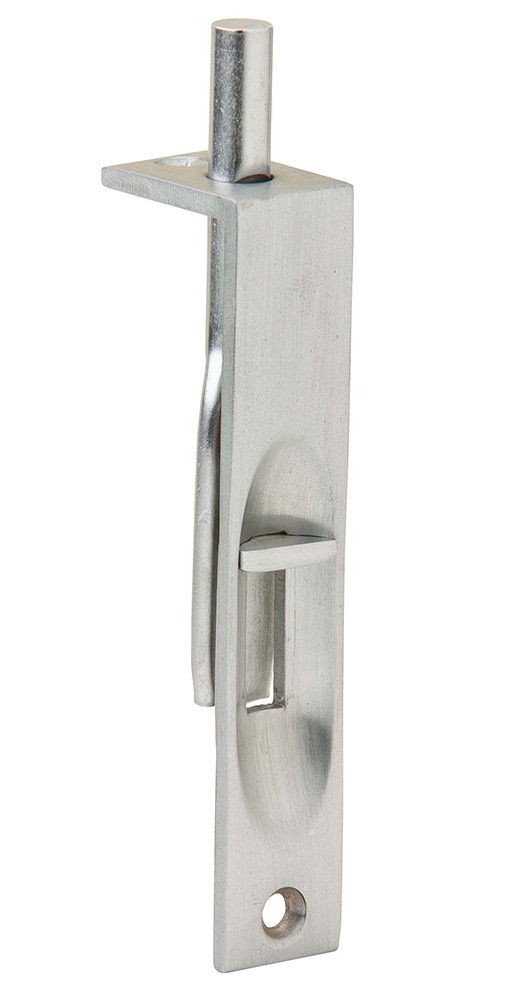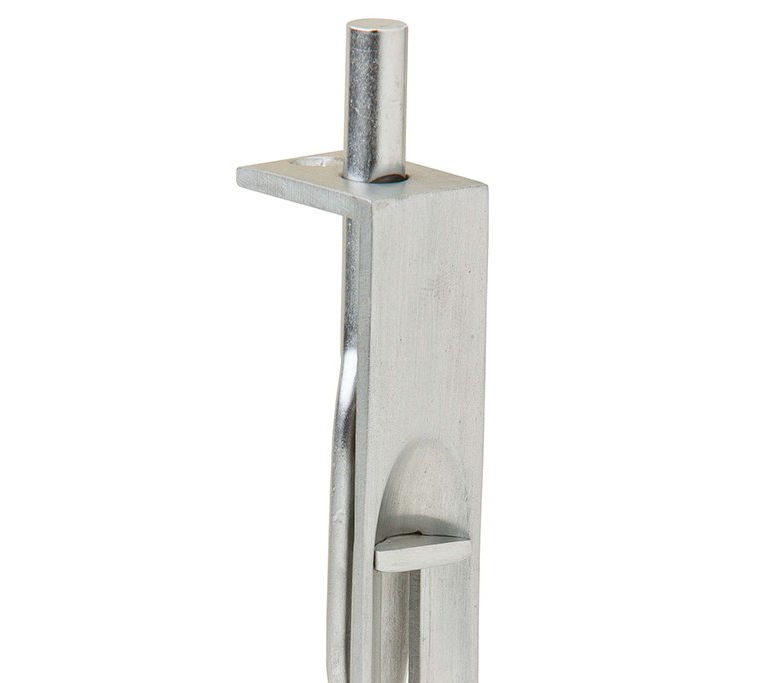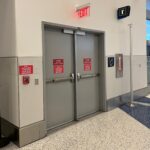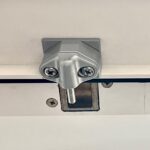
A coordinator serves no purpose when the inactive leaf has manual flush bolts.
I realize that sometimes my posts get into the real nitty-gritty of doors and hardware, but this is often crucial information for someone in the field – especially when the answer can not be found in a model code or standard. So here’s today’s question…
When a pair of fire doors has manual flush bolts and no closer on the inactive leaf, is a coordinator required?
Before I answer the question, here is some background info:
- NFPA 80 – Standard for Fire Doors and Other Opening Protectives requires fire doors to have hardware with an active latchbolt. Manual flush bolts are not positive-latching, BUT NFPA 80 allows them to be used on rooms not normally occupied by humans, where approved by the AHJ:
- 6.4.4.5.1* Manually operated, labeled, top and bottom flush-mounted or surface-mounted bolts on the inactive leaf of a pair of doors shall be permitted to be used where acceptable to the AHJ, provided they do not pose a hazard to safety to life.
- A.6.4.4.5.1 This provision limits their use to rooms not normally occupied by humans (e.g., transformer vaults and storage rooms).
- Keep in mind that NFPA 101 – The Life Safety Code requires corridor doors in health care occupancies to have positive-latching hardware – including the inactive leaf of a pair. Manual flush bolts would not be allowed by NFPA 101 on a health care corridor door.
- NFPA 80 requires fire doors to be self-closing, automatic-closing or power-operated, BUT says that the AHJ could allow a door closer to be omitted on the inactive leaf that is infrequently used:
- 6.4.1.1* Unless otherwise permitted by the AHJ, a closing device shall be installed on every fire door.
- A.6.4.1.1 It is the intent of the standard that most fire doors will have a closing device. However, in limited circumstances the closer might not be necessary because the door leaf is inactive and is normally in the closed position. Examples of such applications include pairs of doors to mechanical equipment rooms and certain industrial areas where an inactive leaf is provided and is infrequently used to permit large equipment to be moved through the door opening. In such instances, the AHJ should be reasonably assured that the inactive leaf normally will be closed and latched…
- NFPA 80 requires a coordinating device on pairs of doors that have an astragal or projecting latchbolt:
- 6.4.1.2.1 Where there is an astragal or projecting latch bolt that prevents the inactive door from closing and latching before the active door closes and latches, a coordinating device shall be used.
A door coordinator helps to ensure that the correct door leaf closes first so the doors can close and latch properly (here’s a video). BUT – when the door has manual flush bolts and no closer on the inactive leaf, the coordinator serves no purpose. The inactive leaf is closed and latched manually (by a person).
The codes and standards don’t address this specifically, so I asked NFPA for a staff opinion (this is a member benefit of NFPA). The response was that NFPA 80 requires a coordinator when an astragal or projecting latchbolt prevents the inactive from closing. Because the inactive leaf with manual flush bolts is assumed to be closed and latched, and the astragal/latchbolt does not prevent that, the coordinator would not be required. This application would require AHJ approval, as noted in NFPA 80.
Any questions?
You need to login or register to bookmark/favorite this content.







If it were a pair of fire doors it would need closers on both leafs and then a coordinator would be required if room is being used by people, if its a storage area a coordinator would not be necessary .
I have seen hundreds of doors like this and just as many opinions from the local AHJ. Definitely a grey area in the codes that needs to be agreed and clarified. In the vast majority of cases all the code would have required was a single door and if just a single door had been installed there would not have been any question or issue. The most common reason why double doors were installed was to accommodate the occasional delivery or removal of large equipment that otherwise would have necessitated taking down part of the wall if just a single door had been installed. So on a day-to-day basis the building occupants pass thru the single operable door leaf the same way they would have if just a single door been installed. Then along comes a builiding inspector who gets all bent out of shape because the inactive leaf (a leaf that isn’t code required) has manual flush bolts even though that leaf does not interfere with the normal operation and function of the active leaf. AHJ’s frequently argue about the door leaf may appear to be locked during a building emergency which could result in confusion or panic, which may or may not have merit based upon the type of occupancy, where the door is located, and familiarity of the arrangement by occupants… all of which could could be addressed through some code required signage or pictograms which is a consistent weakness on nearly all of these arrangements.
As always there is discrepancies in the code and is subject to interpretation by the AHJ . Hopefully common sense is used .As a coordinator is useless in a manual set up . But as an installer and a Sales rep I would retro fit the doors with hardware to comply . Always best to err on the side of life safety .
Our door coordinators installed with removable
Millions?
Hi Ronnie –
Typically no, because removable mullions are used with rim panic hardware and a coordinator is not needed. If a different hardware application is being used and a coordinator is needed, it would have to be a gravity coordinator because the mullion mounts in the same location as the bar coordinator.
– Lori